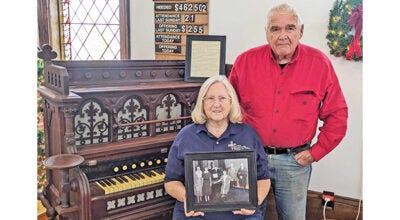Dave Carlock: Tips for young performers
Published 3:57 pm Thursday, September 19, 2013
Every once in a while, I see a new, young performer out doing their thing as a solo. In a small Midwest town such as the one I’m from, it’s rare to find someone stepping out. Sure, high schools have plenty of singers who can handle a spotlighted song in a Talent Show, supported by an ensemble of their friends. But to go out and do an hour set all by oneself is a much bigger move than it appears and rife with challenges.
Recently, watching a young singer/guitarist, I saw some classic mistakes being made and I realized no one ever gave me a checklist of what to prepare for when I did that gig. So here’s a list of things that all young performers should know when they’re starting out. Some of these happened at the show I saw, some didn’t but are worth adding.
1) Realize you have a crowd because you’re a novelty. This is important to remember because when you’re just beginning, you aren’t really as good as you think you are. Now that sounds harsh, but let me explain.
Most of the reason people come to see a young performer is because of the novelty angle. Unless they’re related, a close family friend, or a classmate who thinks the performer is cute, most people show up because they are intrigued by a potential freak of nature: a young musical wunderkind.
2) It’s exciting to rob a bank, but no one wants to take hostages. Here’s what’s happening in a crowd at a young performer’s show in reality. The audience cuts them some slack as they listen, and if they’re pretty good, they will get some love. BUT… Young performers need to treat that stage time like robbing a bank and get out of there before they’re discovered or next thing they know, they’ve got a hostage situation on their hands! Now that sounds harsh, but let me explain.
The longer a young performer plays, the more the magic of the novelty wears off. The audience begins to realize that the performer is good for a kid and has promise, but flat singing notes and dropped beats are no fun to listen to for extended periods of time. And when the audience can’t leave due to the unspoken rule of polite society, the inexperienced teen performer has taken hostages.
Any stage parent reading this might ask me, “who the h*** do you think you are?” Well, I’m the guy who bought a ticket sneaking out the side door. When I’ve heard my fill, I’m outta there. I’m not much of a martyr.
3) Adhere to traditional show lengths. The maximum showtime in a concert by a teen performer should be one hour. Follow this rule implicitly to give your audience an out so they can still feel a little magic when they drive away. The old entertainment adage “leave them wanting more” couldn’t be more apropos here. Don’t add more songs to a full hour’s set, replace weak songs with better songs. This is a hard one to learn, and it takes young performers a long time to learn it.
For perspective, at professional concerts, the headliner with hit records plays 80 minutes, inclusive of encores. The main support act with songs you probably know plays 40 minutes. When there’s a third act, the first-up opener plays 20-30 minutes only. People’s attention spans are shorter than ever in 2013. Let them love you–they want to! Play shorter sets!
4) Change strings before each show, have spare strings on hand, and a spare guitar. You will break a string at the show otherwise, Murphy being in full effect. When you break a string, you need a backup guitar, try to borrow a friend’s. Short of that, young performers need to train their stage-parents, posse, or main squeeze to change strings in case of trouble.
5) Don’t take a break in a show to change a string. A polite but held-hostage audience may make a break for it as soon as you do, I’m not kidding. No one wants to be rude to a young performer, so return the respect and don’t make them wait while you change strings. I was guilty of this when I was a teen too, and I learned long ago that even in a best case, it really kills the momentum the performer was building in the show.
6) Play songs in the best key for the singer’s voice. Being faithful to the key of the record means nothing to the audience. But if the singer is vocally fatigued 25 minutes into an hour set, as the performer I recently saw was, this isn’t putting a best foot forward. There are ways around songs that have riffs relying on open guitar strings, such as tuning the guitar down a full step, ala The Beatles’ “Yesterday”, played as a “G” chord, sounding as a concert “F”. That can lower the key of all the songs a full step, fitting the voice far better in certain instances.
7) Greet your crowd and get email addresses. Far more important than playing a few more songs is playing fewer songs and having a personal connection with the audience. I can’t stress how important this step is. In a perfect world, position yourself between them and the door and thank them all for coming if you can.
FIND A WAY MY FRIENDS
©2013 27 Sounds, Inc. Dave Carlock is a 26-year veteran of the entertainment business whose work as a recording engineer and producer, touring musician, and songwriter made him Googleable. His continuing work as an Independent Content Creator of Sound and Image has earned him a Grammy Award certificate, two Platinum Record Awards, and a Paragon Award in advertising. Currently, he brings national and international artists to make records and music videos at his production studio in the Benton Harbor Arts District.
www.davecarlock.com





